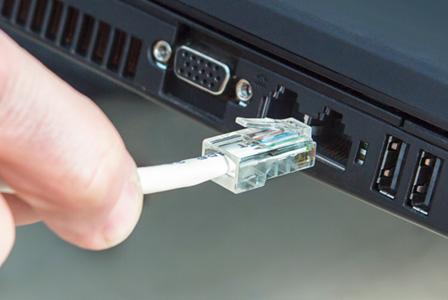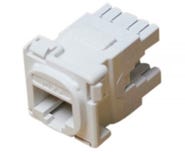

What is an RJ45 connector? What's the difference between an RJ45 and an RJ11 connector?
A registered jack (RJ) is a standard telecommunications network component that forms part of the cabling system to connect devices to a network. The initial definition of registration interfaces was in the Universal Service Ordering Code (USOC) system of the Bell System. There are various interfaces, and here we will discuss two of them.
Definition and use of RJ45 connectors
The RJ45 connector is an eight-pin standardised interface that allows a device to connect to a Local Area Network (LAN). The name RJ45 is an abbreviation for Registered Jack-45, and the digit 45 is the interface standard number. The development of this connector was initially limited to telephone communication uses, but nowadays has a wide range of applications.
Ethernet cables use these RJ45 connectors at both ends. Since the cable uses RJ45 connectors, they are often referred to as RJ45 cables and are used for connecting Ethernet networks with devices such as computers, printers, security cameras etc. Each RJ45 connector has eight pins, and hence each RJ45 Ethernet cable has eight wires with different colours.
Definition and use of RJ11 connectors
The RJ11 connector is a six-pin analogue telephone interface connecting telephones and modems to the cable. The name RJ11 is an abbreviation of Registered Jack-11 and the digit 11 is the standard interface number. It is commonly used in telephone cabling systems.
An RJ11 jack is a six-pin position but may have four or six contacts used to carry the signal. In recent times, the use of RJ11 connectors has been popular for connecting modems and landlines.
Differences between the RJ45 connector and the RJ11 connector
| Degree of comparison | RJ11 | RJ45 |
| Use | The RJ11 connector is mainly used in ADSL networks for phones and modems. They have a use in voice applications. | Computer networks use the RJ45 connector. It is predominately used in Ethernet cabling systems. |
| Configuration | The RJ11 connector has a six-pin positioning but may have four or six contacts used to carry the signal. These connectors are also known as 6P4C and 6P6C. | The RJ45 connector has an eight-pin positioning and usually all eight contacts are used. Therefore, these connectors are also known as 8P8C. |
| Bandwidth | The RJ11 connector has a capacity that can support 24Mbps. | The RJ45 connector has a capacity that is capable of supporting up to 10Gbps over Ethernet. |
Recent Articles
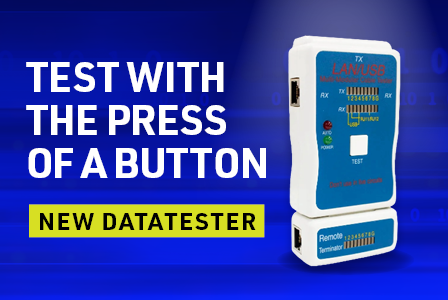
Test Network Cabling & Patch Cords FAST with the New DATATESTER by CABAC
Testing LAN cables is quick and easy when you’ve got the new CABAC DATATESTER on hand. This budget LAN cable tester is perfect for contractors who need to test data and coaxial cable for correct termination.
View Products
Exploring the Advantages of Thin Patch Leads
For Australian data installers, selecting the right network components is critical to achieving the performance and reliability that your customers expect. Among these components, the humble patch lead plays a crucial role in interconnecting various devices.
View Products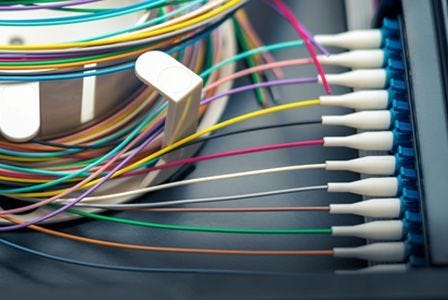
FOBOT Buying Guide
In this informative article, we will provide a basic buying guide for FOBOTs or “Fibre Optic Break Out Trays” so that you can choose the right product for your specific needs.
View Products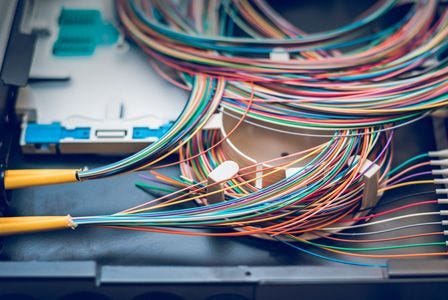
What is a FOBOT?
In this article, we will explain what a FOBOT is and where they are used. We will also describe how a FOBOT works and the important role this component plays in managing and distributing optical fibres efficiently. So, if you're looking to learn all about FOBOTs, make sure to read this article...
View Products
What is the difference between OS1 and OS2 Singlemode Optical Fibre?
This technical article delves into the differences between OS1 and OS2 Singlemode fibre optics, including their core characteristics, performance specifications, and ideal applications.
View Products